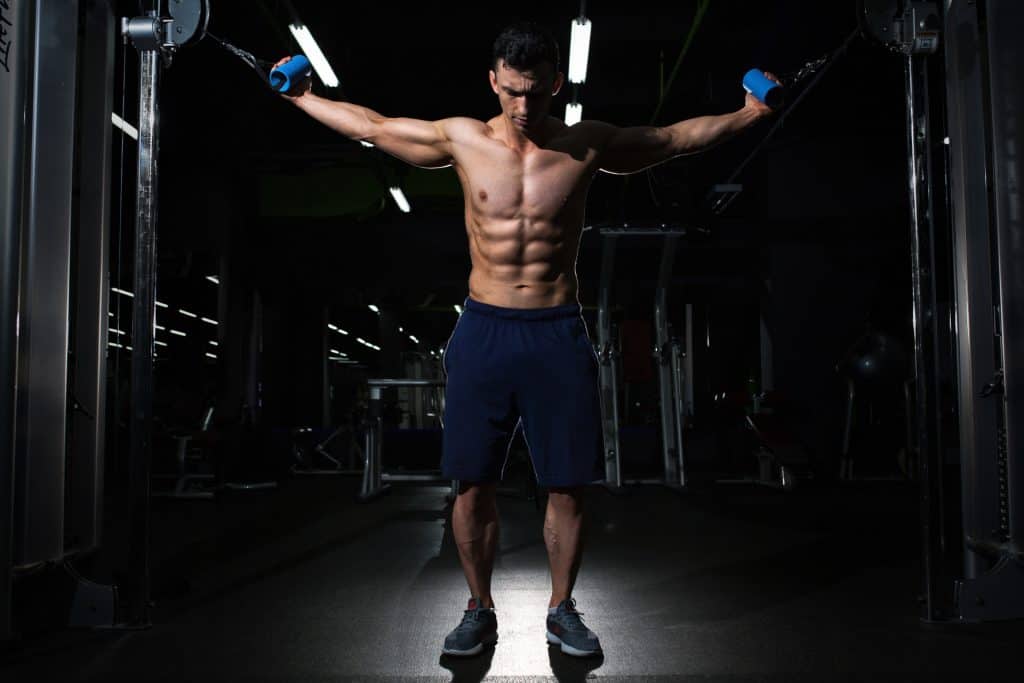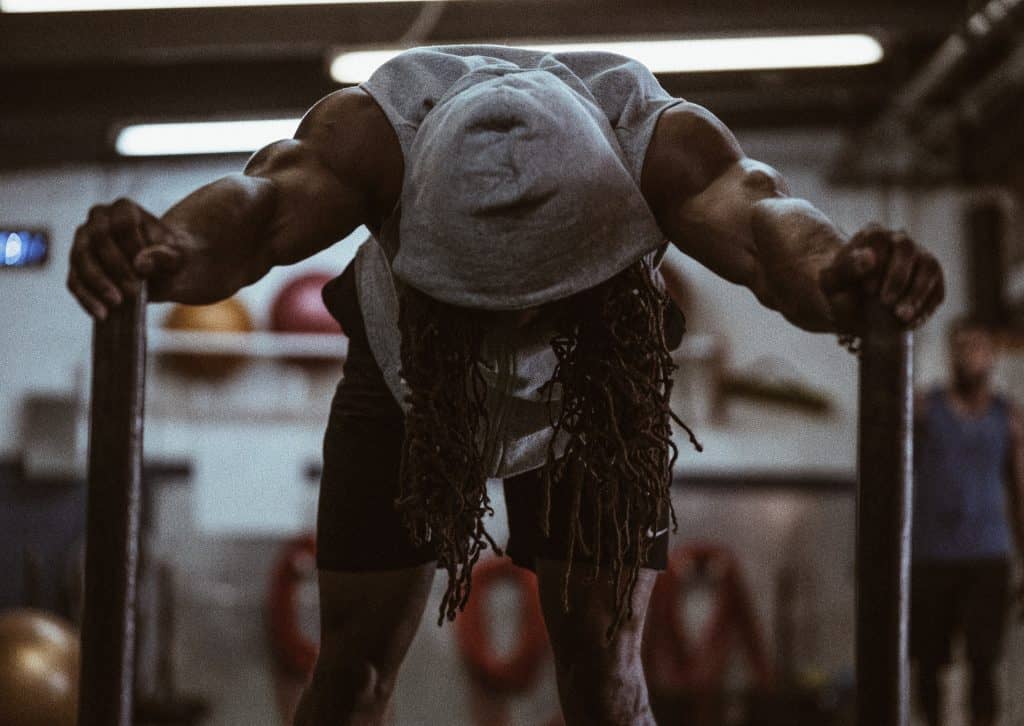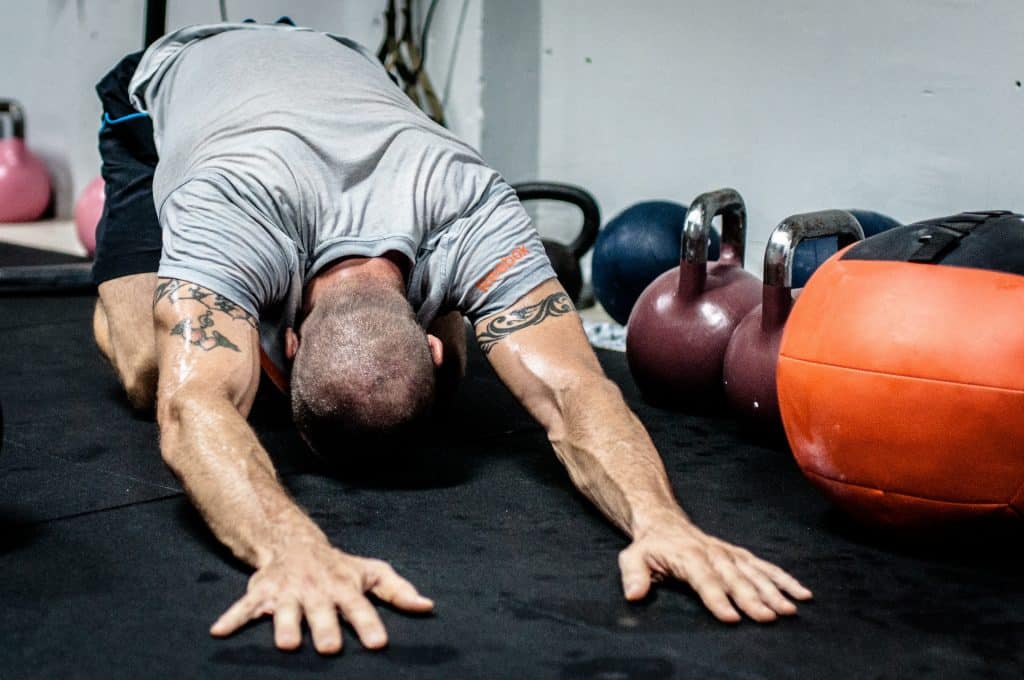“Call me crazy, but I love suffering the day after my workout”
Committed bodybuilders understand that pain is part of the fun, as someone put it. “no rest is worth anything except the rest that is earned”.
When you decided to become a bodybuilder, you made a commitment. You decided to get your training done before you go out every day or week. With this type of attitude, nothing can stop you from succeeding.
In the first part of this article, we looked at pain tolerance. In the second part, we are going to focus on managing muscle soreness.

How to Manage Muscle Soreness Like A Pro
Muscle soreness is normal to have after a workout, but that doesn’t mean that you must suffer.
If you are not experiencing any pain after lifting or exercise, you may be stuck in a plateau.
To keep yourself from falling into this trap, we recommend that you mix up your routine. By that I mean, do not follow a similar routine for more than one and a half months.
Instead, switch up your routine every two or three weeks.
What is Progressive Overload and Why is it Important?
As the name suggests, progressive overload refers to the act of continuously increasing weights during a workout. This is a very important principle that helps you build strength and muscle.
Your body won’t change if you don’t force it to, for example, if it becomes used to your current routine, the routine will no longer be a challenge to it. Because of that, you’ll plateau.
To get out of that you will have to “shock” your body. To do that, we recommend:
- If you increase volume, decrease frequency and intensity
- Do more cardio
- Increase weight training and resistance
- If you increase frequency, decrease intensity
- Try new routines or exercises.
Again, pain is part of progress, don’t fear it. When you experience it, it tells you that what you are doing is working.
What is the importance of progressive overload?
- Prevents boredom
- Forces muscle growth
- Improves muscle memory

How to Listen to Your Body
How much punishment can you take?
The only way to find out is to push yourself to the limit. Question, how do you know when you have reached your limit?
If you can’t handle the pain, or if your body will no longer move. It means that you have reached your limit.
To find out how much punishment you can take, we recommend:
- Start by selecting weights that you can lift (10 reps) with moderate difficulty.
- Take less than 30 second rests in between sets
- If by the tenth rep you can still lift the weight comfortably it means that you can increase weight.
Repeat that until you find your limit.
Overtraining Warning Signs
If something is wrong, your body will send red flags. The following symptoms indicate that you are overtraining:
- Sleep disturbances
- Depression
- Loss of motivation to train
- Weight loss
- Change in appetite.
If you experience any of that, take it down a notch. The idea is to find a routine you enjoy, not one that feels like torture.
The Importance of Stretching

Stretching your muscles before lifting has been proven to lessen or prevent post-workout soreness but only to a certain level. This topic is still up for debate, in fact, there are studies that found that stretching does not prevent muscle soreness.
Whatever side of the debate you are on, one thing is for sure, stretching feels good, it increases energy, prevents injury, releases tension, and it improves flexibility.
Other benefits of stretching include:
- Improves nutrient utilization in areas where microdamage has occurred.
- Stretching also improves waste transport from areas that receive most strain during exercise.
- Increases blood flow to target muscle groups.
Does Lactic Acid Cause Muscle Soreness?
Lactic acid is a by-product of muscle metabolism, the issue is, it can irritate your muscle and cause muscle soreness.
If there is a high amount of lactic acid in your muscles, you will feel sore. The good news is lactic acid is released from your muscles a few hours after a workout.
If too much acid builds up, the result might be a condition known as lactic acidosis that is characterized by stomach pain, nausea, rapid breathing and muscle ache. This condition normally occurs during intense exercise as lactic acid builds up in your bloodstream faster than you can burn it.
To prevent this problem, you should:
- Drink plenty of water
- Eat a balanced diet
- Get enough sleep
- Give yourself time to recover
Cardio helps you deal with the pain
Just like stretching, cardio has some beneficial effects. Studies have found that light training or cardio, helps to reduce symptoms of delayed onset of muscle soreness.
Should I exercise when sore?
If everything hurts, it means that you overdid it.
We recommend you take two or three days off. On the other hand, if you are feeling stiff, try light/moderate cardio along with stretches.
How to relieve soreness
- Drink lots of water
- Get a massage
- Hot cold treatment
- Take a warm bath
- Increase carbohydrates and protein
- Stretch
Final word
Is pain good or bad?
Post-workout muscle soreness is not a bad thing, it is a sign of progress. You can relate to that right?
If you decide to become a bodybuilder, you will have to get used to the pain. In the words of Arnold Schwarzenegger. “don’t quit. You’re already in pain. You’re already hurt. Get a reward from it”
An important issue we haven’t talked about is painkiller addiction, yes, painkillers can get the job done, but if you use very strong pain killers or if this becomes your go-to option after every workout. You might become addicted or develop tolerance. Be safe, avoid drugs. Learn how to tolerate pain.
You have the time, you have the energy, all that you need is the right frame of mind. Sign up for free today, let us help you through your journey to success.